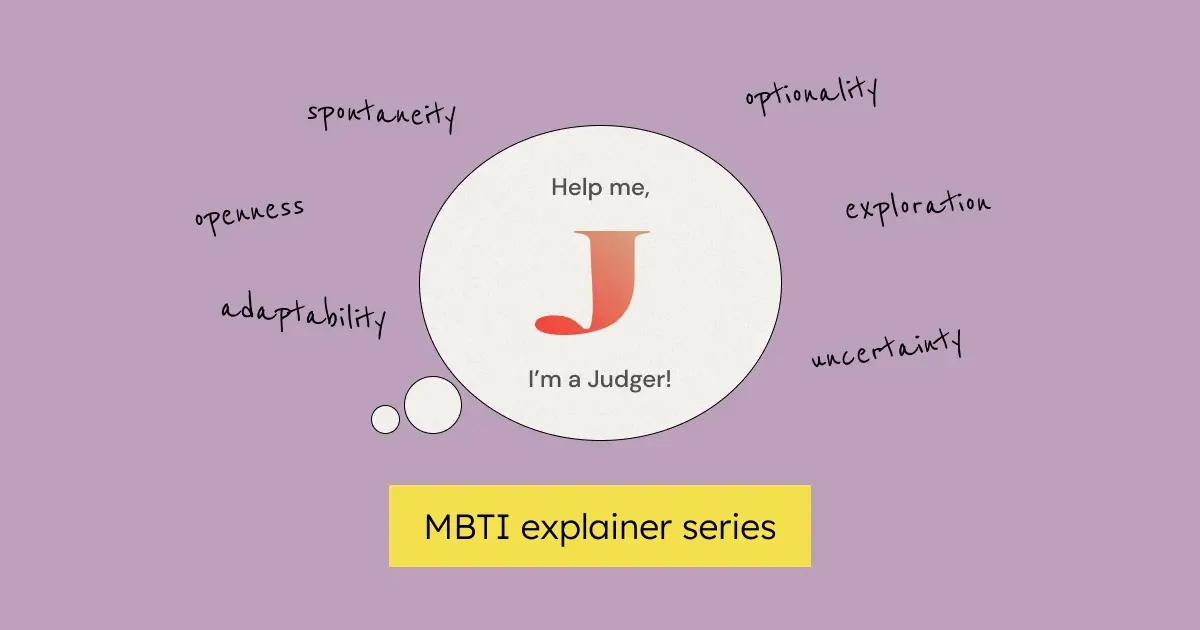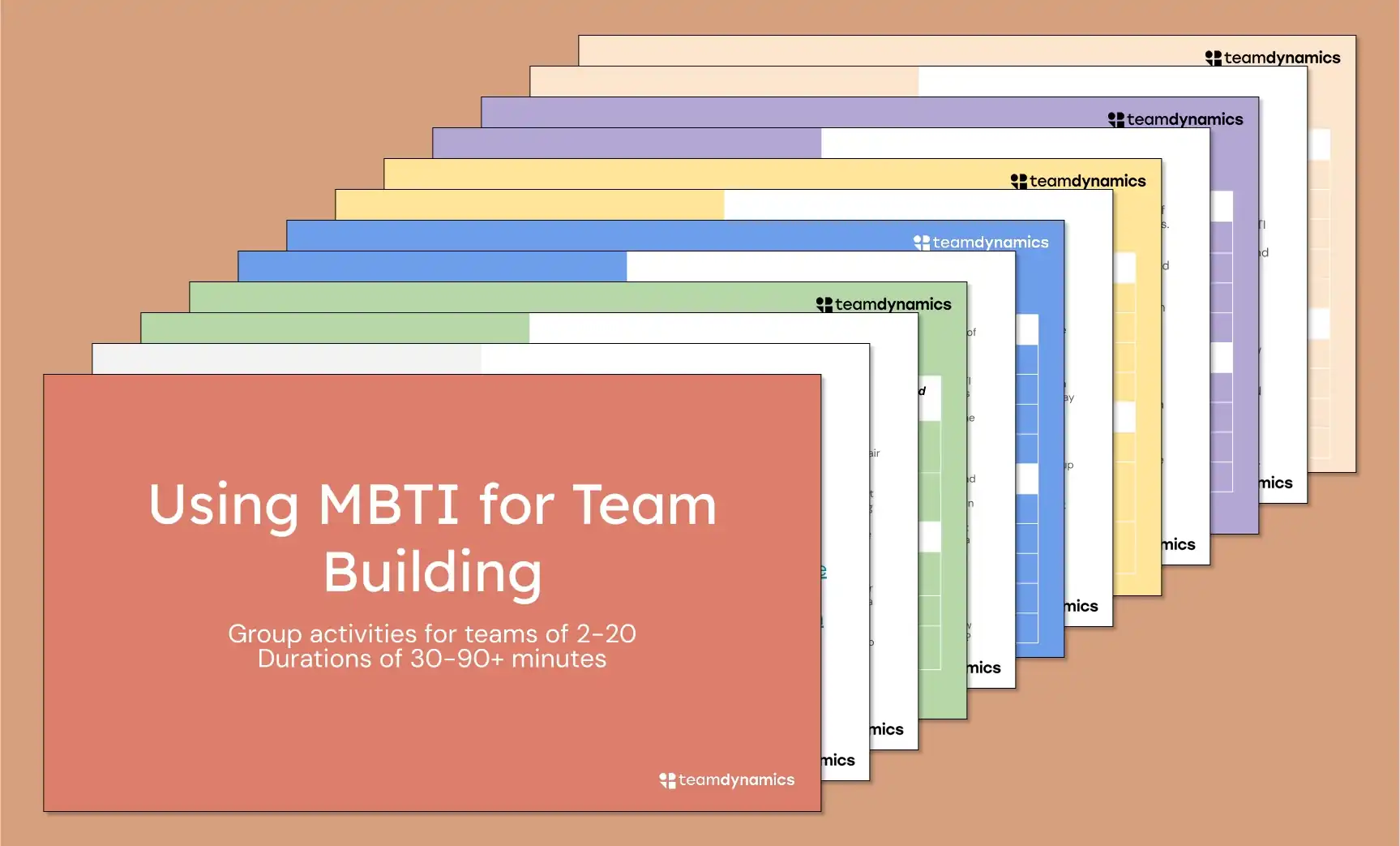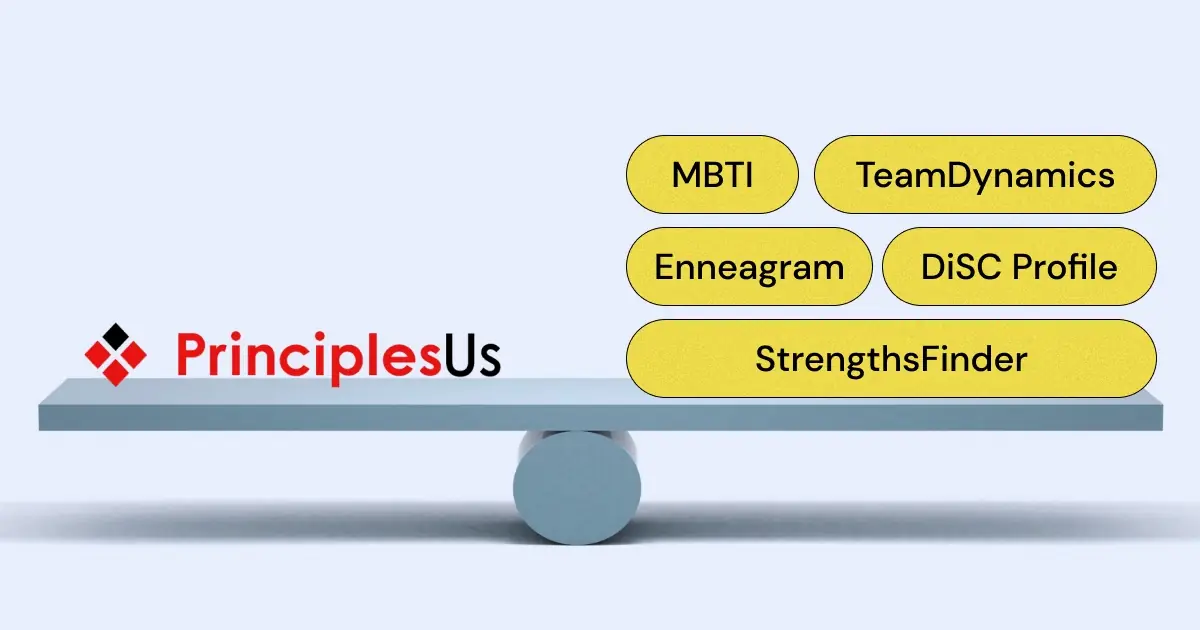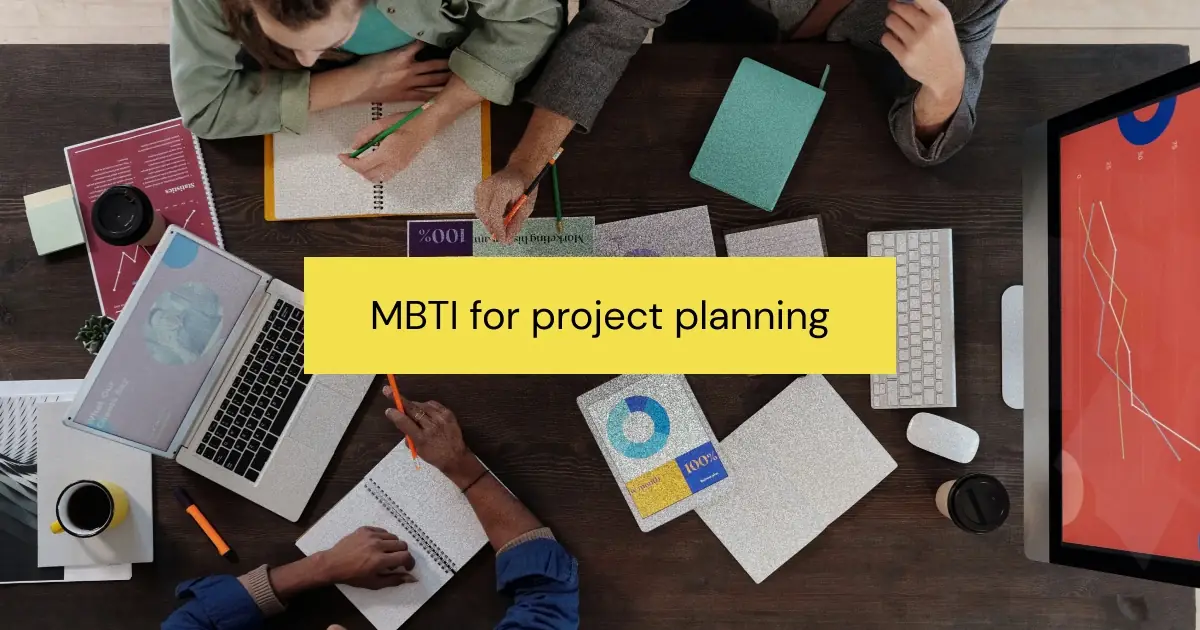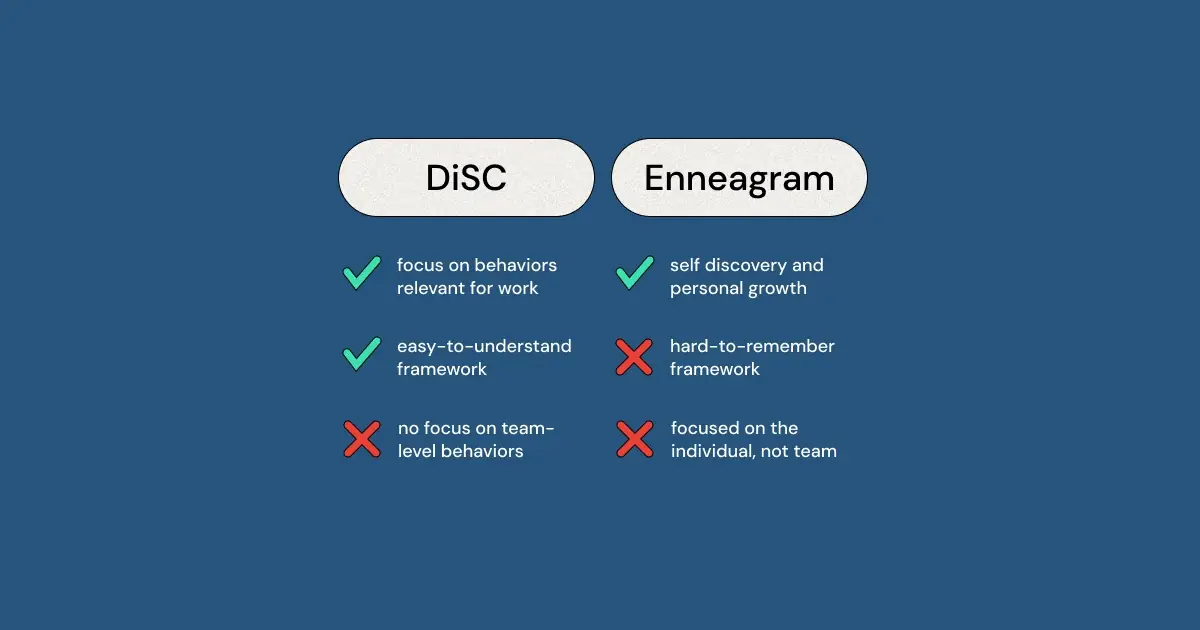Picture this: You're a 'Judger' in the MBTI terminology. You love structure, enjoy planning, and feel comfortable when things are decided. On the other hand, your team is a lively bunch of 'Perceivers.' They thrive on spontaneity, prefer to keep their options open, and often make decisions on the fly. Can you find common ground? Absolutely!
Understanding your team's personality types is not just about knowing who's a party animal or who loves a quiet night in. It's about grasping the deeper ways in which we think, make decisions, and interact - what we call MBTI chemistry. When harnessed correctly, MBTI chemistry can transform your work environment, fostering empathy, improving communication, and boosting productivity.
So, stick around as we explore how you, as a Judger, can harmoniously collaborate with a team of Perceivers, leveraging your unique strengths and their adaptive flexibility. Let's crack the code of MBTI chemistry together!
Understanding the Perceiver Mindset
Perceivers, according to the Myers-Briggs Type Indicator (MBTI), are characterized by their flexibility, spontaneity, and openness to new experiences. They're the people who keep their options open, preferring not to make a final decision until they absolutely have to. They're more process-oriented than goal-oriented, often enjoying the journey just as much as the destination.
In the workplace, Perceivers tend to value spontaneity and flexibility in decision-making. They thrive in environments that allow for a degree of unpredictability and do not impose rigid structures or deadlines. This isn't to say that they can't plan or meet deadlines, but rather that they enjoy the flexibility to adapt as new information comes to light.
To illustrate, let's consider a typical work scenario: a team brainstorming session. A Judger might enter the meeting with a clear agenda and a list of points to be discussed. A Perceiver, on the other hand, would be more inclined to let the conversation flow organically, making room for unexpected insights and ideas. If a new, intriguing topic emerges, Perceivers are likely to explore it, even if it deviates from the initial plan.
{{inline-cta}}
The beauty of the Perceiver mindset lies in this adaptability. They can swiftly pivot and come up with creative solutions when unforeseen challenges arise. Understanding this can help improve your MBTI chemistry, leading to more successful and harmonious collaborations in your diverse team.
Challenges for Judgers in a Perceiver-Dominated Environment
In a team dominated by Perceivers, Judgers might find themselves facing a few hurdles. Judgers are characterized by their love for structure, planning, and decision-making. They like to have a plan and stick to it, and they derive satisfaction from ticking items off their to-do list. This can sometimes clash with the flexible, open-ended style of Perceivers.
One of the main challenges for Judgers in a Perceiver-heavy team is the lack of structure and predictability. Judgers prefer to work within a framework with clearly defined roles, goals, and timelines. In contrast, Perceivers might leave things more open-ended, allowing room for changes and new ideas as they go along. This can be unsettling for a Judger who finds comfort in plans and predictability.
Let's take an example: Imagine a team working on a project with a looming deadline. A Judger, in this case, would probably have a detailed plan mapped out for how to approach the task, with steps broken down into manageable chunks and a clear timeline. However, in a Perceiver-dominated team, there might be a preference for a more fluid approach, with lots of brainstorming and pivoting as new ideas come up.
Looking to use MBTI for team building? Download these free templates for MBTI team building workshops!
In this situation, the Judger's structured approach might be misunderstood or overlooked. They may feel frustrated or anxious as the deadline approaches and the plan seems to be constantly changing. This can lead to tension and misunderstandings within the team, affecting the overall MBTI chemistry.
Remember, neither approach is inherently better or worse than the other; they're just different. The key to improving team dynamics lies in understanding and respecting these differences.
Strategies for Judgers to Navigate a Perceiver-Dominated Team
1. Embrace Flexibility
One of the key strategies for Judgers is learning to become more adaptable. Remember, plans can change, and that's okay. For instance, if your team decides to pivot a project midway, try to see it as an opportunity for innovation rather than a disruption. This flexibility can lead to surprisingly creative outcomes and improve your MBTI chemistry with Perceiver teammates.
2. Encourage Open-Ended Brainstorming
While Judgers might typically want to get to a decision quickly, it can be beneficial to encourage and participate in open-ended brainstorming sessions. This is where Perceivers shine. For example, in a meeting, instead of immediately narrowing down options, let the discussion flow freely. You might find that this leads to more innovative solutions.
3. Communicate Your Need for Structure
Perceivers are open-minded and flexible, so if you express your need for structure, they'll likely try to accommodate you. For example, you could suggest setting a loose agenda for meetings, providing some structure but also leaving room for spontaneous discussion. This way, you'll feel more comfortable, and the Perceivers still get to keep things open-ended.
4. Appreciate the Value of Spontaneity
Try to see the benefits that come from the Perceivers' spontaneous nature. For instance, their ability to adapt quickly can save the day when unforeseen issues arise. Acknowledge and appreciate this strength in your teammates - this recognition can do wonders for team MBTI chemistry.
5. Balance Planning with Going with the Flow
While you may be inclined to stick strictly to your plan, try to be open to spontaneous changes that may occur. This doesn't mean abandoning your plan altogether but rather, adjusting it as necessary. For example, if a new, promising idea comes up halfway through a project, consider the benefits it might bring, even if it means altering the plan.
6. Collaborate on Deadlines
Finally, working together to set deadlines can help balance the Judgers' need for timeliness and the Perceivers' need for flexibility. For example, you could suggest a deadline but then ask for team input, allowing for adjustments based on everyone's perspectives. This way, you create an environment that respects both the Judgers' and Perceivers' needs, promoting better MBTI chemistry.
By implementing these strategies, Judgers can not only navigate but thrive in a Perceiver-dominated team, creating a more balanced, dynamic, and effective work environment.
The Value of Balance in Decision-Making
In the world of MBTI chemistry, balance is the name of the game. When a team has a mix of Judgers and Perceivers, it creates an environment that combines the best of both worlds. But what does this balance look like in practice, and how does it contribute to successful decision-making? Let's delve in.
Judgers, with their love for structure and plans, bring organization to the table. They help keep the team on track, ensuring projects are completed in a timely manner. This ability to plan and execute is invaluable when it comes to reaching team goals.
Perceivers, on the other hand, bring a sense of spontaneity and flexibility. Their open-ended approach to problem-solving often leads to creative and innovative solutions. They can adapt to changes quickly, and their willingness to explore various possibilities contributes to a broader perspective in decision-making.
Now, imagine a scenario where a team is working on a crucial project. The Judgers in the group help outline a structured plan, setting clear goals, timelines, and responsibilities. Meanwhile, the Perceivers keep the brainstorming process open, fostering an environment where new ideas are welcomed and explored. When an unexpected obstacle arises, the Perceivers' adaptability comes into play, helping the team pivot and find a new direction. The Judgers then step in again, restructuring the plan to accommodate this change.
This balanced approach ensures that the team is not only structured and goal-oriented but also adaptable and innovative. It allows the team to benefit from the strengths of both personality types, leading to successful outcomes. This is the power of good MBTI chemistry – it turns a group of individuals into a dynamic, effective team that can handle whatever comes their way.
Conclusion: Navigating the MBTI Chemistry for a Successful Team
Navigating the diverse landscape of a team's personalities can seem like a challenge, but understanding the MBTI framework can turn that challenge into a strength. We've explored the unique dynamics that arise when a Judger finds themselves in a team full of Perceivers and shared some practical strategies to thrive in such an environment.
Remember, as a Judger, you bring order, clarity, and direction to your team. Your ability to plan and execute is a valuable asset. However, it's crucial to appreciate the contributions of your Perceiver teammates as well. Their spontaneity, flexibility, and creative problem-solving add a different flavor of effectiveness to the team mix.
We've discussed embracing flexibility, encouraging open-ended brainstorming, communicating your need for structure, appreciating spontaneity, balancing planning with going with the flow, and collaborating on deadlines. Implementing these strategies can significantly enhance your interactions with Perceiver team members.
In the grand scheme of things, the ultimate goal is to achieve a balance in decision-making, a blend of structured planning and creative spontaneity. We've seen how this balance can lead to successful outcomes, illustrating the power of good MBTI chemistry.
Good MBTI chemistry doesn't just improve team dynamics for the short term. It has a lasting impact, fostering an environment of mutual respect, understanding, and productivity. It turns a group of individuals into a cohesive unit, capable of achieving their shared goals effectively.
So, Judgers, step into your strength, value the contributions of your Perceiver teammates, and watch how your combined efforts can elevate your team's performance. Remember, in the world of MBTI chemistry, diversity is not a barrier; it's a bridge to greater team success.
Check out our other MBTI resources!
We hope you've found this guide useful. Remember, everyone's experience is unique, and it's about finding strategies that work best for you. If you enjoyed reading this, don't keep it to yourself! Share it with your friends, colleagues, or anyone you think could benefit from it. Let's create a more understanding and inclusive workplace together!
MBTI is one of the most popular personality tests, and people are always asking us how they can better use it with their teams. Here are a few other useful articles you can try:
And if you're looking to crack the code on working with a specific MBTI type, check out our guides written just for you:
Interested in diving deeper into personality types, teamwork, and team performance? We've got a treasure trove of insightful articles just waiting for you to explore. Check out our other blogs on topics like team dynamics, effective communication strategies, and more in-depth dives into different personality tests. And check back often - we're always publishing more great content!




.png)
